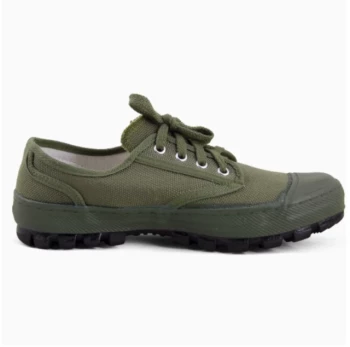For discerning buyers, Goodyear welted shoes represent a significant investment—but one that pays dividends in longevity, comfort, and style. This guide breaks down the tangible factors that justify their premium pricing, equipping you to assess quality like a seasoned shopper.
Why Goodyear Welted Shoes Earn Their Price Tag
Goodyear welt construction isn’t just a marketing term; it’s a centuries-old technique that prioritizes durability and repairability. Unlike glued or cemented soles, which fail after moderate wear, welted shoes can be resoled multiple times, often lasting decades with proper care.
The Anatomy of Durability: Materials and Craftsmanship
1. Leather Quality Matters
- Full-grain leather: The gold standard for durability, retaining the hide’s natural fibers for unmatched strength. Over time, it develops a rich patina.
- Corrected-grain leather: Sanded and refinished to hide imperfections, sacrificing longevity for affordability. Ideal for budget-conscious buyers who prioritize aesthetics.
- Vegetable-tanned insoles: Used by premium brands like Crockett & Jones, these mold to your foot for personalized comfort and resist moisture buildup.
2. Stitch Density (SPI) Signals Strength
Higher stitch-per-inch (SPI) counts (typically 8–12 SPI in quality welts) create tighter seams that resist separation. Loose stitching accelerates wear at stress points.
Spotting Superiority: 5 Visual and Tactile Quality Indicators
-
Examine the Welt Join
- A seamless transition between welt and upper indicates precise craftsmanship. Gaps or uneven stitching suggest rushed production.
-
Flex the Sole
- High-quality welts allow gentle flexing without creasing the upper leather. Stiffness may indicate inferior materials.
-
Check the Insole
- Lift the sock liner; a thick, vegetable-tanned leather insole (not synthetic board) confirms long-term comfort.
-
Assess the Outsole
- Dainite or leather outsoles should be firmly stitched, not glued. Tap the heel—hollow sounds hint at poor filler materials.
-
Inspect the Lining
- Fully lined interiors (especially with calfskin) prevent stretching and improve breathability.
Breaking Down the Long-Term Value
Resoling Economics vs. Fast Fashion Disposability
- Cost Comparison: A $500 Goodyear welted pair resoled every 5 years ($100 per service) outlasts 10+ pairs of $100 glued shoes, saving ~40% over 15 years.
- Environmental Impact: Fewer discarded shoes reduce landfill waste. Brands like Cheaney emphasize sustainable practices in their welted collections.
Case Studies: A Decade-Old Pair’s Journey
A well-maintained Church’s brogue (2014 vintage) showcases:
- Year 1–3: Leather softens; footbed molds to the wearer.
- Year 5: First resole restores original support.
- Year 10: Patina adds character; structural integrity remains intact.
Ready to Invest in Timeless Footwear?
3515 partners with distributors and brands to deliver expertly crafted Goodyear welted shoes at scale. Whether you’re a retailer or a bulk buyer, our production expertise ensures durability without compromise. [Contact us] to discuss your footwear needs today.
Key Takeaway: The upfront cost of welted shoes reflects decades of wear, not just seasons. By prioritizing full-grain leather, tight stitching, and repairable construction, you’re investing in footwear that ages with purpose.
Related Products
- Factory-Direct Wholesale Canvas Boots with High-Traction Rubber Soles
- Puncture-Resistant Velcro Safety Boots for Wholesale & Custom Manufacturing
- Wholesale Safety Footwear Manufacturer for Bulk & Custom OEM Orders
- Wholesale Anti-Smash & Puncture-Proof Safety Shoes Custom Manufacturing for Brands
- Safety Footwear Wholesale Manufacturer for Custom OEM/ODM Production
Related Articles
- How Vulcanized Rubber Work Boots Outlast Alternatives – And When to Choose Differently
- How Vulcanized Rubber Boots Outperform Standard Footwear: Science and Practical Benefits
- How Vulcanized Rubber Engineering Creates Unbeatable Outdoor Boots
- How ASTM-Rated Boots Solve Security Guards' Critical Safety Challenges
- Why Vulcanized Soles Dominate Technical Skateboarding: A Science and Performance Breakdown




















